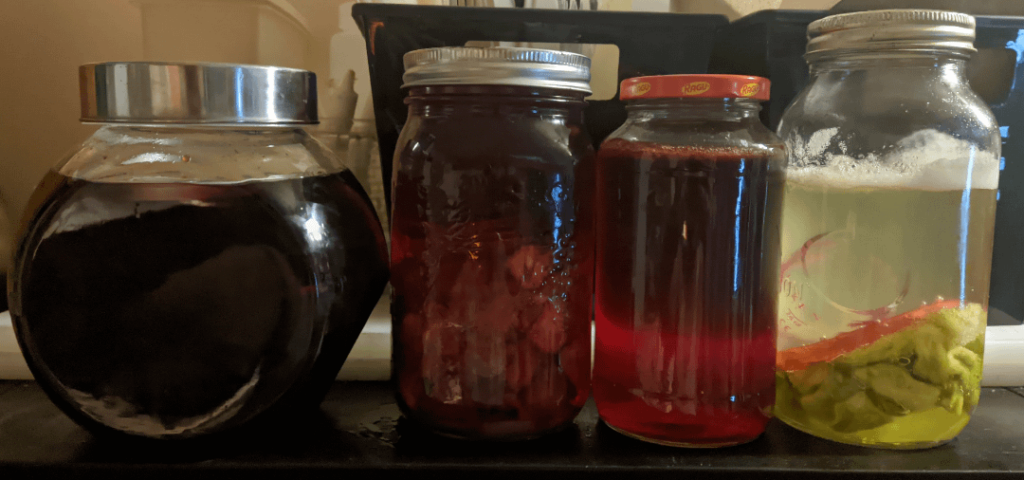
To make a cheong syrup- layer equal weight sugar and fruit to a glass vessel. Let it sit for a couple days for the moisture to make most of the sugar into syryp. Mix the fruit to redistribute unmelted sugar, and add something to weigh down the fruit to make sure it’s submerged. Let sit for another 4-10 days at room temperature (up to 100 depending on fruit) drain and refrigerate.
I make syryps pretty often, and started making cheongs formally last year. I had already been doing it to make a lilac extraction, inspired my oleo saccharum, but I had never tried it with fruit. I wasn’t expecting much, as often i would just juice fruits full and make a syrup with that. I mean mathematically, how could it really taste any more fruity than that, right? However something about the cheong method make something much more vibrant than the sum of their parts, and it’s not just the acidity that the mild fermentation brings.
This summer I found a fantastic deal on cherries, local strawberries and basically got a honeydew melon for free. The cherry one literally tastes more cherry like than eating a fresh cherry; the bitter note in the peel is more pronouced. I even made a syrup with cherry juice to make some maraschino cherries and its not even close. The flavour of strawberry syrup is much less lost when making something like a matcha latté. And the honeydew syrup is pretty much as strong flavour wise as midori liqueur, so much so that I think I’m just going to proof it up.
And you also get the wonderful byproduct of the fruit at the end, that can be dried into really nice candy, or minced into a delicious fresh jam.
Why does this taste so much better than other methods? Is there some sort of slow breakdown of flavour compounds? Theres very little scientific study online. It makes sense with citrus cheong as most of the flavour is in the peel and that’s generally thrown away, but with other fruit its king of crazy how good it is.
by SpadesHeart

